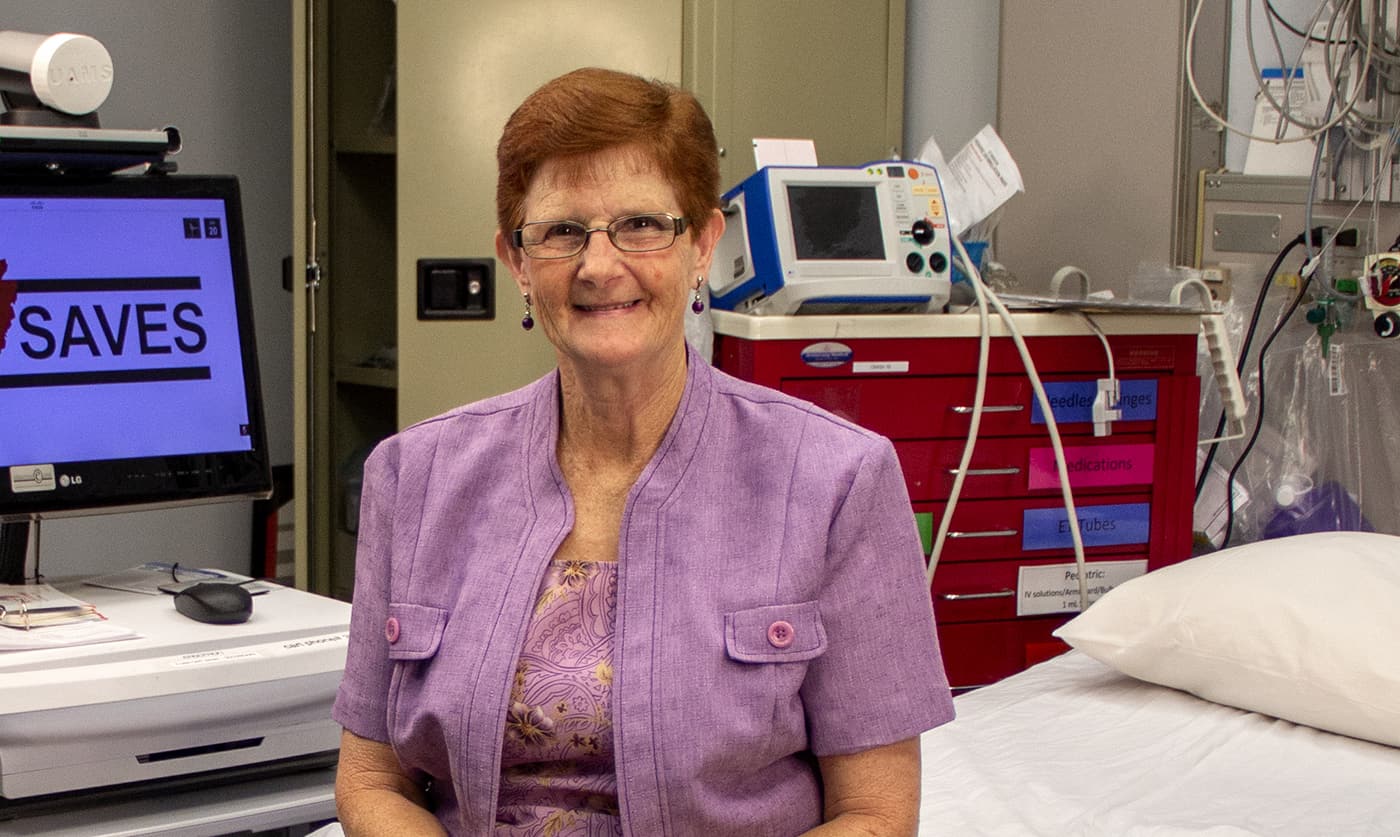UAMS-Led Digital Health Stroke Program Helps Improve Arkansas’ Stroke Deaths Ranking
| LITTLE ROCK — Arkansas recently fell from seventh place to 13th place in the nation in the number of stroke deaths per capita, an achievement health officials credit in part to a statewide digital health program of stroke education and treatment led by the University of Arkansas for Medical Sciences (UAMS).
In 2011, Arkansas was ranked first in per capita stroke deaths, based on data from the federal Centers for Disease Control and Prevention. The state was in seventh place in 2017, and the latest ranking at 13th is based on data from 2019, the most recent year for which data is complete.
The UAMS-led Digital Health Stroke Program provides 56 Arkansas hospitals with round-the-clock access to stroke neurologists who can quickly assess whether a stroke patient can be helped by a clot-busting drug — alteplase — that often restores complete function to the patient. The program is part of the UAMS Institute for Digital Health and Innovation.
“The institute’s stroke program has shown just how many lives can be saved from sustained public education and digital outreach,” said UAMS Chancellor Cam Patterson, M.D., MBA. “This is a milestone achievement for the program, institute and UAMS.”
The program uses a high-speed video communications system that enables a stroke neurologist to evaluate patients at partner hospitals that lack such specialists. Patients must be evaluated and treated within the critical 4.5 hour period following the first signs of stroke. Since the program began Nov. 1, 2008, more than 9,500 patients have received stroke consultations through the Digital Health Stroke Program.
The Digital Health Stroke Program has treated more than 3,200 patients with alteplase through its network of hospitals. The program also conducts statewide outreach to educate the public on how to recognize and get help fast for those having a stroke.
“Ten years ago, stroke neurologists were out of reach for many Arkansans, especially those in rural areas,” said institute Director Joseph Sanford, M.D. “Timely treatment is essential to saving lives and preventing debilitating injury. A key part of digital health is about bridging the gaps to definitive care that physical distance can create. These tools rely on collaborating teams of physicians, nurses, and health professionals to make fast access possible at any participating hospital in the state. We are grateful for their partnership.”
One of thousands helped by the program was Freda Dodd of Marmaduke. On the morning of Feb. 24, 2017, Dodd, then 61, received a text message on her phone. She was confused and didn’t know what to do in response. Her husband recognized her symptoms, including loss of speech and paralysis in one arm, and took her to Arkansas Methodist Medical Center in Paragould.
There, after a video consultation with a UAMS neurologist, she received alteplase. An air ambulance transported her to UAMS Medical Center.
“It seemed like within minutes my arm was coming back,” Dodd said. “When I got in that ambulance, I started to sing. Everybody was good to me at UAMS and in Paragould. I am so thankful for life. When I began to thank the Lord and sing in that helicopter, I knew my words were coming out normal, I was as normal as I have ever been.”
Dodd, 61, said she has no lasting impairments from the stroke.
“Stories like Freda’s are why we do this every hour of every day,” said Lori Berry, RN, Digital Health Stroke Program director. “They are the faces in front of the numbers. As impressive as the new ranking is, we are not stopping at 13th. We are constantly working to improve response times and the network that makes improved stroke care possible for Arkansans.”
